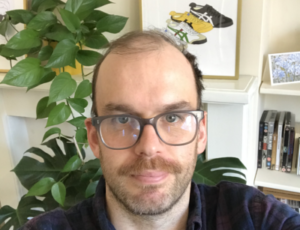home

This page hosts explanations of all Dominic's repositories
Code repositories
Introduction
Contents
- Computer Vision and Automated /microscopy
- Bioimage Analysis
- Computer Vision and Machine Learning.
- Fluorescence Correlation Spectroscopy
Computer Vision and Automated Microscopy.
Dominic currently applies computer vision and machine learning techniques to automate and optimise microscopy acquisition. He is also developing cost effective and efficient augmented reality integration for microscopy. This research is covered in detail in following project page:
- AMCA - AMCA (Automated Microscopy Control Environment) is a Python framework for applying object detection algorithms for the acquisition of cells and biological structures in biological samples.
Bioimage Analysis.
Prior to his present appointment, Dominic worked as a Bioimage Anlayst and collaborated with a number of researchers to enhance and develope their research. During this time, Dominic developed mulitple tools which assist researchers within this discipline. These repositories include:
- MaximaFinder is a Find Maxima algorithm developed in Python and Cython for counting and localising foci in 2-D images.
- ijpython_roi - ImageJ to Python Region-of-Interest (ROI) exchange library.
- Peroxisome scripts - This collection of jupyter notebooks and Python functions are designed for handling multi-colour STED super-resolution images, aligning them and analysing them.
- GP-plugin - Generalized Polarization plugin for Fiji and ImageJ
- General macros - General Macros/sripts for Fiji/ImageJ: Guassian Fitting, N-D Fitting, FWHM along a line, counting foci.
Computer Vision and Machine Learning.
During his MSc. Dominic studied computer vision and machine learning and has since being applying these techniques in microscopy image analysis. The following project pages document some of these efforts:
- Quantifly - QuantiFly is a software package for automating egg counting in Drosophila genetics research.
- Density Kernel Estimation 3-D Method for counting cells in 3-D using only weakly annotated images and density estimation prediction.
- Qbrain - Qbrain was later forked by Martin Hailstone to form Cytocensus and is software for counting and quantifying cells in 3-D tissue.
- U-NET modified for density kernel estimation - Method for counting objects in 2-D using only weakly annotated iamges as input, and providing a density estimation prediciton.
Fluorescence Correlation Spectroscopy.
Dominic is a long-time collaborator of Christian Eggeling a pioneer of FCS techniques and their application in nanoscale microscopy and within the fields of biophysical and immunological research. Dominic has developed software and theorectical approaches for point and scanning FCS and has also developed a simulation library which supports this kind of research:
- FoCuS-point - Python TCSPC (Time Correlated Single Photon Counting) FCS (Fluorescence Correlation Spectroscopy) correlation and data visualisation software.
- FoCuS-scan - Python scanning FCS (Fluorescence Correlation Spectroscopy) correlation and data visualisation software.
- Nanosimpy - Python and Cython library for simulating various types of bilayer diffusion for use with FCS methods.